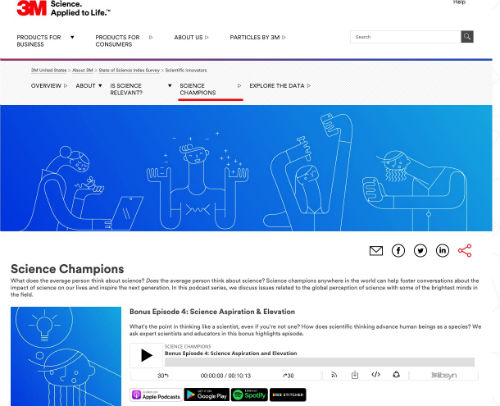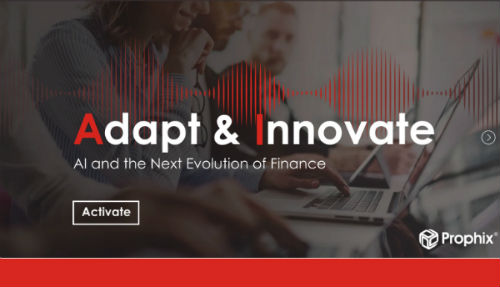Transcript of Setting the Stage for a Moment of Awakening written by John Jantsch read more at Duct Tape Marketing
Back to Podcast
Transcript
This transcript is sponsored by our transcript partner – Rev – Get $10 off your first order
 John Jantsch: This episode of the Duct Tape Marketing Podcast is brought to you by Klaviyo. Klaviyo is a platform that helps growth focused e-commerce brands drive more sales, with super targeted, highly relevant email, Facebook and Instagram marketing.
John Jantsch: This episode of the Duct Tape Marketing Podcast is brought to you by Klaviyo. Klaviyo is a platform that helps growth focused e-commerce brands drive more sales, with super targeted, highly relevant email, Facebook and Instagram marketing.
Hello, and welcome to another episode of the Duct Tape Marketing Podcast This is John Jantsch, and my guest today is James Fell. He is a very popular health writer and speaker, and he is also the author of a book we’re going to talk about today. The Holy S!it Moment: How Lasting Change Can Happen in an Instant.
So, James, thanks for joining me.
James Fell: Thanks very much for having me on the show, John.
John Jantsch: So, we didn’t talk about this when we were off air, but that is the first time I’ve said that word on air. I run a very PG show here. I must admit though, I was in the airport the other day, and the top three best seller titles they had facing out, two of them had the F word in them, and one of them said ass.
I guess it’s just the world in we live in today, isn’t it?
James Fell: The funny thing is, is that I was at first opposed to that title. We don’t have to say it again. You want to be respectful of people that don’t want the potty mouth on their show, and that’s fine.
But, it came about because … The book is about the science of the life-changing epiphany, and that is what, in common vernacular, people will refer to it as. As a holy S moment.
John Jantsch: At that point, it’s not even a curse word to them, right? It’s like a phrase.
James Fell: Yeah. So, I was talking to my agent. We were weeks away from pitching it to publishers, and we still didn’t have a title. He said, “Just come up with 10 different title ideas, and send it to me,” and that one was one of the one’s on the list, and it was way down the list.
He came back, said, “Let’s call it this.”
I said, “I don’t know man, I don’t really like that one.”
He said, “No, it’s good. It’s accurate. I think publishers will like it, and later on we can change it, if we come up with something better. But, we need something now to pitch.”
I said, “Fine.”
As it turned out, the publishers loved the title. Everybody loved the title, and on and on since then. I’m still like, “I’m not to sure about it,” but so many people loved it, that through the process, when they heard about it, I said, “Okay, I guess it’s grown on me.”
So …
John Jantsch: Well, and I think, as you know, that’s kind of a phrase that people are used to. It’s not just gratuitous or uncreative, to stick it in there. I think that’s one that people can relate.
James Fell: Yeah, it’s a thing. People have used that term before. I didn’t invent it, I just turned it into a book title.
John Jantsch: As you mentioned, the book is about the science of life-changing epiphanies. When suddenly, someone has a sudden lightning strike of understanding that awakens their passion. I’m reading this from something you had written.
Would it be safe to say that your journey started that way? Your journey to becoming a very popular health writer, I should say?
James Fell: Well, it absolutely did. There was the big transformative event in my earlier 20s, that took me from a very lazy man, to an industrious hardworking one. I went from flunking out of school and being in debt, and drinking way too much, and in poor physical condition, to transforming everything, because of a sudden lightning strike of awakening.
Then, later on, there’s been more clarifying epiphanies that came later on. I ended up getting an MBA and working in business for about a dozen years. I didn’t hate it, but I didn’t love it either. It was about the age of 40 when I just said, “Life is too short to spend most of my waking hours doing something that I’m not really passionate about.”
And, I knew that writing was my passion. That it was something that was very excited, and I wanted to see if I could make a go out of it, and see if I could turn this into a career.
When I took that step, there was an overwhelming sense of rightness, that, “Yes, this is what I’m meant to do.”
I worked harder at that than I had ever worked at anything in my life, and it paid off. It was because I was so excited to do my job each day, that a year after I had my first published article, I had a column in the Los Angeles Times.
John Jantsch: Yeah. So, I don’t know, do you share what that epiphany was, or does that not make any sense to the story?
James Fell: Oh, the original one from my early 20s? Yes, I absolutely do. So, I tell that in chapter one. So, I was flunking out of university. I was about to be kicked out. I was overweight, and my credit card companies were calling. I read one of those motivation quotes.
Which, I’m not saying that I’m this huge fan of motivational quotes. It’s just that this one resonated at that space and time. I was just at the right point of my life to receive this sudden enlightenment. I read it in my university newspaper while I was sitting in the food court, and it was a quote, from all people, folk singer Joan Baez.
The quote read, “Action is the antidote to despair.”
When I read that, I realized that all of these problems I was facing down was of my own doing. It was a whole that a dug myself, and that I had the ability to take action to fix it all. All of these things could be fixed via my own effort.
So, that was the first sort of big insight. Then, the sudden flash of self reflection came, that made me realize that I had lazy my entire life, and I had skating through on cruise control, and that if I just got down and started to work really hard, that there was light at the end of the tunnel.
Then, what happens next in psychological terms is called dramatic relief. Where, you still see, all of those problems still exist. They’re still there. Still very real, but you’re relieved because you know your going to fix them. They’re going to be gone eventually, because you’re going to work towards the resolution. You see that light at the end of the tunnel, and I did.
Instead of going to the campus bar, to toss back beer, I went to the registrar’s office and launched an appeal to beg my way out of my failing report card. I told them, I went to that meeting saying, “I’m a changed man,” and they believed me. After that, I was a very good student.
John Jantsch: Well, great for them for taking a chance, because I bet you they’ve heard that story before.
James Fell: Maybe. Maybe the passion came through. I think I was pretty convincing, because I believed it. At my core, I believed that I had changed, and I guess they got that vibe. I ended up getting two master’s degrees.
John Jantsch: So, it was a good investment on their part too, right? Let me ask you this. Thousands of other people read that Joan Baez quote that day, and still flunked out.
My point is, what was the difference? Why did that strike you, and not those other thousand people? That quote, I don’t know if it was in a song, or something. That’s been around. That hasn’t moved a lot of people to act.
So, what was the thing going on in your brain, that made you choose to act? It’s like when that person … You know, my father-in-law tried to quit smoking for 25 years, and then finally decided to quit one day, and that was it. That was the end of the story.
I mean, what happened?
James Fell: Well, and your father-in-law’s example, there’s some research in the book about people that quit smoking. The ones that suddenly say, “That’s it, I’m done,” are far more successful than the ones that do the planned attempt.
John Jantsch: But, he did the planned attempt, 15 times. So, then one day, it just clicked.
James Fell: Yeah. So, the click was the one that worked, and that’s the research, that shows that those ones are more likely to be successful.
In my case, I was in the right space in time for a few different reasons. One is called crystallization of discontent. Where you have various different problems in your life, that individually they don’t seem like that big of a deal. But, when you are able to look at them as a whole, that whole becomes greater than the sum of its parts.
Where you read something akin to a breaking point, where you’re just like, I cannot go in this direction any longer. I think the thing that added the most weight to this was the fear of being kicked out of school made me wonder what’s my girlfriend going to think, because she was a straight A student who was destined for med school.
I worried, if I flunked out, that it would potentially spell doom for our relationship. That put more fear into me than anything else. That was something that felt unbearable to me. Was losing this woman that I loved. I think that was one of the things that really pushed me toward this realization, that I had to change.
Everything worked out. We’ve been together 29 years now.
John Jantsch: Want to remind you that this episode is brought to you by Klaviyo. Klaviyo helps you build meaningful customer relationships by listening and understanding cues from your customers. This allows you to easily turn that information into valuable marketing messages.
There’s powerful segmentation, email auto-responders that are ready to go. Great reporting. You want to learn a little bit about the secret to building customer relationships? They’ve got a really fun series called Klaviyo’s Beyond Black Friday. It’s a docu-series, a lot of fun. Quick lessons.
Just head on over to Klaviyo.com/BeyondBF, Beyond Black Friday.
You, in a previous book, wrote about weight loss, and you’ve worked with folks trying to lose weight. That’s probably another one of those, where somebody struggles for years, and then one day, or maybe six months, eight months later is 80 pounds lighter.
For some reason, something happened, and it clicked. Obviously, that’s very similar, probably, to the smoking, but is there a moment, or something that goes on in our brain, that makes something like that stick?
James Fell: Yes, and the answer’s a little bit complicated, so bear with me for a moment. That was actually, working with people who lost a lot of weight, was what first gave me the idea for this book. What it boils down to, it’s called the Rokeach’s Model of Personality, and it relates to what’s called The Identity Value Model of Self Control.
So, the Model of Personality is that … If you’ve ever seen the movie Shrek, he says, “Ogres are like onions.”
Well, people are like onions too, in that we have layers to our personality. At the external layer are our actions, our behaviors. Then, you go down a layer, and you’ve got beliefs, and then there’s attitudes, and then there’s your values.
Then, at the core is your identity, yourself. When people focus on changing something like weight loss, they focus on their behaviors. Eat better, eat less, get some exercise. If that is in conflict with your core identity and your values, that’s an incredible struggle.
It’s a model that’s built on suffering. Where you have to use willpower and grit, and it’s painful, and you gotta suck it up. The failure rate is tremendously high. It’s one of those reasons why we preach baby steps, where you minimize the suffering by just doing a little bit, that’s only a little bit uncomfortable. Eventually, you get used to it, and you slowly develop habits, and drag yourself over a motivation tipping point.
The failure rate of that is just so high, because it’s just such an uninspiring way to approach it. Now, the shift that we talk about in this book, with the life changing epiphany is it’s not about changing behaviors, it’s about changing core identity and core values. So, the example of a man named Chuck Gross. Chuck weighed over 400 pounds.
He had been heavy his entire life. He was the epitome of the person, that the likelihood of them losing weight and keeping it off was extraordinarily remote. He had tried and failed to lose weight many times. Then, something very unexpected happened. His wife came out of the bathroom, and holding in her hand was a positive pregnancy test.
At first, he said he was overjoyed at the prospect of being a father. Like I said, it was unexpected. Then, he realized, in a flash, that this time he was going to lose weight, it was going to work, he was going to keep it off. The reason why is what shifted was his identity.
In a moment, he went from not a father, to, congratulations buddy, you’re going to be a dad, and along with that came an entirely new set of values. Which were, I value of the idea of being a really fit father, that can rough house with my kids, and have a good, long healthy life, and be that type of a role model for my children, and all that type of thing.
For him, this was more important than anything else in his life. It was more important than sitting on the couch. It was more important than overeating on treat food. Here’s a direct quote from Chuck, “I didn’t have to struggle with my motivation. It came built in.”
He said, it was a fait accompli. It was a tremendous sentence of relief, that he knew that his weight problem … He still weighed over 400 pounds, but he knew that his weight problems were over, because he was going to lose it, and that was all there was to it.
He lost over 200 pounds, and he’s kept it off more than a decade, because of that core identity and value shift.
John Jantsch: So, we’ve been talking primarily about somebody trying to change a bad habit. Smoking, losing weight, or eating healthy. How does this apply to that person that wakes up one day, and goes, “This is what I’m going to do with my life,” or, “This is how I’m going to innovate this product.”
It applies equally, doesn’t it?
James Fell: Oh, absolutely. So, there’s the breaking point concept, of maybe rock bottom, or just crystallization of discontent. Then, there’s also the good-to-great scenario, which I’m stealing that line, as the title of a book by James Collins.
Which is a great book about how corporations can have tremendous success, and I reference the book a number of times in mine. It’s all about the vision quest. Where, suddenly you have this new passion in life that’s been unlocked, which is like me with writing. That, I felt that I had to become a writer, and I worked harder at that than anything I ever have.
I got to tell you, making it as a writer isn’t easy. You got to work hard. There’s examples of that in the book. Of one woman, she had an epiphany while she was walking across the parking thought. That she was going to go back to school and get her PhD in pharmacology.
Another example is of a woman that decided to move away from home, to launch a new career, because she just realized that her family environment wasn’t good for her anymore. So, these types of quests, where it’s about finding purpose in life.
So, I know that a lot of books have been written about happiness, how to be a happier person. Well, happiness is mostly a state of mind, and I think, some people, it may always elude them, and other people are just naturally happy, no matter what happens.
This is about flourishing. Where, you look at what your capacities and your talents and your abilities and your education and your wisdom all makes who you are. You look at that, and you realize, “What could I do with this? If I was suddenly inspired to strive for it, what could I use with my internally abilities and my situation? How could I make myself a better person, and improve? Do things that are good for me, and good for other people, and maybe even go on to change the world?”
That is the type of thing that will drive you endlessly. It will keep you awake at night, when you should sleep. I’m a big fan of these ambitious quests. I refer to it as, you know what, impossible dreams, you need to let those go. Implausible dreams can be incredibly motivating, because the potential upside has so much value for us, that we feel, the realization of this quest would be so amazing, that I gotta do it. I gotta chase it, I gotta give it a try.
John Jantsch: I mean, that’s the closest thing there is to a process for this, because I can see listeners going, “Okay, this is great, but how do I find my moment?”
What you just described is sort of the process, isn’t it?
James Fell: Yeah, that’s an incredibly 50,000 foot executive summary view. I wrote an entire book, and it’s not a short book. It’s a long the longer, that is filled, beginning or end, with action items. To use an MBA term.
There are tasks I give the reader all the way through, of things that you can do to have your holy S moment, your life changing epiphany. It’s really hard to boil down into a couple of minutes, but a lot of it can involve … First, believing that it can happen.
These types of experiences are very common. We’re seeing the approximately one-third of people have them without even trying. If you start to put effort into it, by believing that it’s something that can happen for you. Most of us sort of go through life on cruise control, without spending too much time thinking, “Well, what do I want to do with the rest of my life? What is it that would really bring me joy and allow me to flourish as a human being?”
Spending time, analyzing what your capacities and talents are, what that might entail as the new version of you, 2.0, and what you can do that would be good for you and good for other people, and really give you an overwhelming vision of success for the future, and spending time analyzing that.
Then, here’s the real key point. The solution to the problem, of what do I do with the rest of my life, doesn’t come while you’re actively trying to solve the problem. During that analytical phase is when you’re filing away bits of information into your unconscious brain. Then, when the answer comes is when you’re not actively trying to solve it. When you’re in a distracted state.
Which is why I’m a big fan. I tell readers, “Go for a walk, leave your phone at home.”
Take a shower, and don’t … Even if you have a waterproof phone, don’t take it in there with you. Meditate, pray. Prayer is a common one, because it’s another form of medication.
Just get used to lying on the couch without distraction, and letting your mind go anywhere. No offense to the work that you do, but if you’re going for a walk, don’t listen to a podcast, because you need to get comfortable with being alone with your own thoughts. That’s when these sudden insights arrive, when you least expect it.
But, there is the pre-work that you can do, to put the information into your brain. That, during this distracted state, allows those little bits of information to meander and collide, and gel in a profound way, that suddenly delivers unto you the answer. Which, can be incredibly motivating, because you’re suddenly very excited, and there’s a positive neurochemical rush, that says, “Oh, yeah. This is it. This is what I got to do.”
John Jantsch: You know, we’ve been talking, of course, about people that … You mentioned the person that had a lot of weight to lose, and smokers, and that person who’s destitute, back against the wall. They have that decision time.
Sometimes I think there’s a far greater amount of people that are stuck in, “Everything’s okay,” or in mediocrity land, who don’t realize that they maybe are suffering as much as they are.
James Fell: That’s absolutely right. There’s some research in the book about that. When life is good, we become risk averse. The person who reaches a breaking point has nothing to lose. Where as, where life is good, we see people who are suffering. We’re like, “I don’t want it to be like that,” and that can demotivate us to go on an ambitious quest.
But, you have to realize … There’s a great quote, that I put in the book, by radio personality, Earl Nightingale. Earl Nightingale was one of the few men who survived the sinking of the USS Arizona in the battle of Pearl Harbor. So, this guy knew about struggle.
This quote is, “Most of us tiptoe through life, trying to make it safely to death.”
When I read that, I was like, “I don’t want to be like that.”
Other people may read it, and say, “Yeah, what’s wrong with that. That’s fine,” and that’s okay. If that’s the way you think. If you want to tiptoe through life and make it safely to death, that’s okay. I won’t judge you for that.
But, if you read that, and say, “No, that’s not for me. I want to make it unsafely to death. I want life to be more of a thrill ride, where I feel like I realized my true potential.”
William James is considered the father of American psychology, and in the 19th century, he wrote about how most people only utilize a fraction of their potential, and that if you start thinking about what could I do if I was truly inspired. If motivation was not a scarce resource. If I had all the motivation I needed to do something, what would that something be?
Start asking yourself that question. What’s the harm in investigating the question? You never know what answer might pop up.
There’s another quote, TS Eliot wrote, “We do not know what egg it is we’ve been sitting on until the shell cracks. You need to be ready to embrace the audacious.”
You never know. You may end up becoming so inspired, that when this answer comes to you, the world better watch out, because you can be capable of more than you imagine.”
Other people may not see it. Maybe, right now, you don’t even see it. But, when something wakes up. When people wake up with these visions and missions, the world gets changed.
John Jantsch: There’s a Dylan Thomas poem. It’s one of my favorites. “Do not go quietly into that great good night,” that really talks about that idea of raising a ruckus while you’re here, because we’re all going to die.
James Fell: Oh, yeah.
John Jantsch: So, you only get one chance at this. So, James, where can people find out more about your work, your writing, and of course, pick up The Holy Sh!t Moment?
James Fell: So, my website is BodyForWife.com. Yes, that was the lovely woman I was talking about earlier. BodyForWife.com.
If they click the book tabs, there’s links to every possible purchasing platform, including audio. If people didn’t mind listening to my voice, I’m the one who did the narration for the audio version, and I’m also very active on Facebook.
I’ve got a big interactive following at Facebook.com/BodyForWife, and less active on Twitter. Which is @BodyForWife.
John Jantsch: We, of course, put these in the show notes. So, people will be able to click on them if they head on over to Duct Tape Marketing.
So, James, thanks for joining us. Really enjoyed the chat. Going to dig into the book myself, and hopefully we can run into you someday out there on the road.
James Fell: Thanks so much, John. It’s been a pleasure.
from Duct Tape Marketing http://bit.ly/2sU9CRN
via
IFTTT
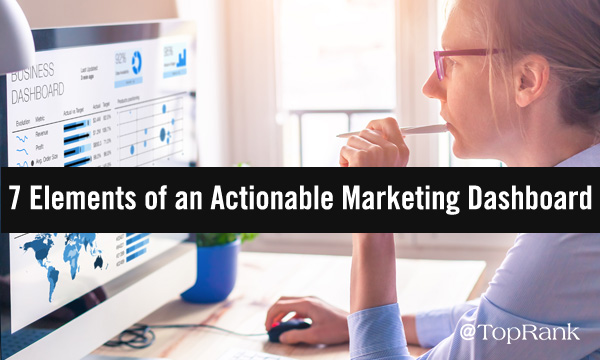
 Hey, content marketers. Imagine this: You’re sitting in a marketing meeting and you hear the following:
Hey, content marketers. Imagine this: You’re sitting in a marketing meeting and you hear the following:
 John Jantsch: This episode of the Duct Tape Marketing Podcast is brought to you by
John Jantsch: This episode of the Duct Tape Marketing Podcast is brought to you by  Today on the podcast I chat with
Today on the podcast I chat with 
 John Jantsch: This episode with the Duct Tape Marketing podcast is brought to you by
John Jantsch: This episode with the Duct Tape Marketing podcast is brought to you by  Today’s guest on the podcast is
Today’s guest on the podcast is  This episode of the Duct Tape Marketing Podcast is brought to you by Asana! Asana is a work management tool to keep your entire team on track. The Duct Tape team relies on Asana to unify communication, assign and delegate tasks, and manage deliverables for everything from individual meetings to big client projects.
This episode of the Duct Tape Marketing Podcast is brought to you by Asana! Asana is a work management tool to keep your entire team on track. The Duct Tape team relies on Asana to unify communication, assign and delegate tasks, and manage deliverables for everything from individual meetings to big client projects.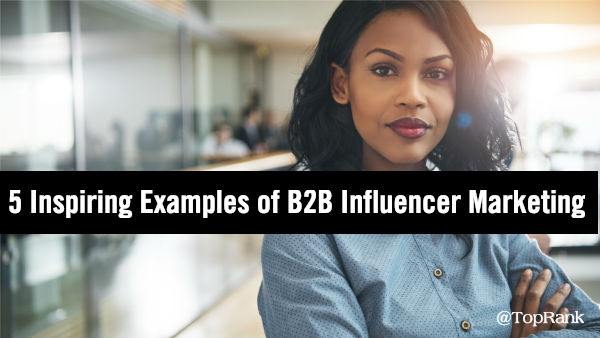
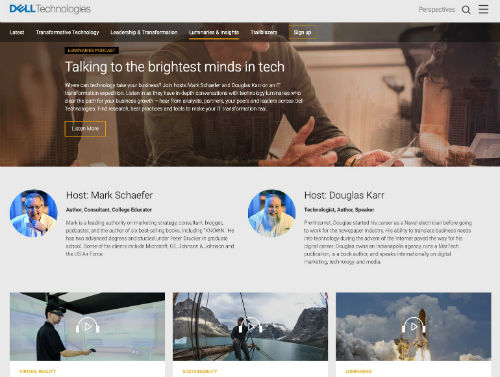
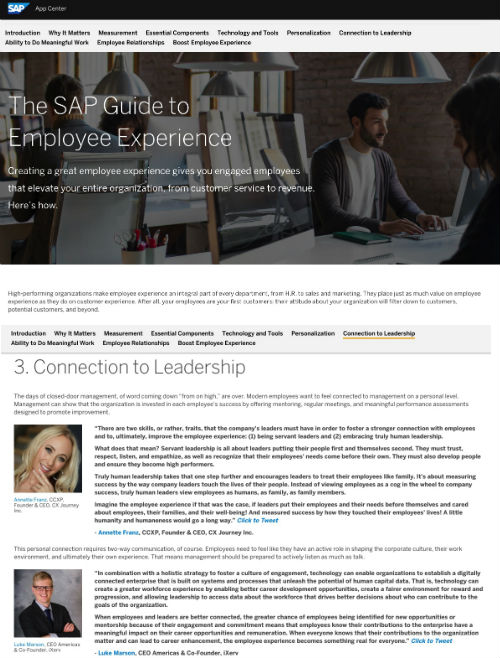 SAP App Center - The SAP App Center is a hub for 3rd party applications that integrate with SAP solutions. While functional, SAP realized there was an opportunity to better attract and engage an audience looking for applications as solutions more robust, credible content that would be easy to find through search. To make SAP App Center topics of focus become "the best answer", for customer, robust Power Pages including
SAP App Center - The SAP App Center is a hub for 3rd party applications that integrate with SAP solutions. While functional, SAP realized there was an opportunity to better attract and engage an audience looking for applications as solutions more robust, credible content that would be easy to find through search. To make SAP App Center topics of focus become "the best answer", for customer, robust Power Pages including 